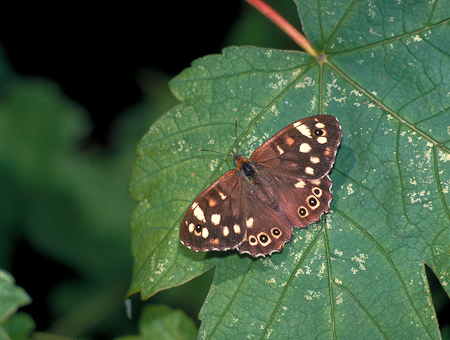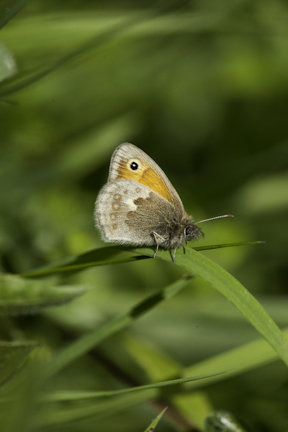
Weather charts are an almost infallible guide to butterfly emergence and behaviour. March 2013 showed a continuation of the weather patterns we have endured through most of 2012 which resulted in the wettest spring and summer for the UK on record, governed it is supposed by a shift in the northerly jet stream. Predictably the 5th and 6th of March were the only days when butterflies would have commonly be seen.
5th March BC
Brimstone m
Small Tortoiseshell (Howard)
April 2013
With temperatures picking up mid month, butterflies became prevalent, and in at least the numbers they were recorded in previous years.
April 20th 2013
Small Tortoiseshell
Comma (4)
Peacock (1)
Brimstone m (1+)
April 21st
Small White
Holly Blue (Hugh)
April 23rd
Brimstone f (1)
April 25th
Speckled Wood ?
The comma has come to replace the small tortoiseshell as the commonest of the Spring butterflies.
April 27th
A showery day with breaks of sun, but the chill of the morning air has prevented the butterflies from flying during the early part of the day.
The first thing I saw was a neighbour cutting nettles from exactly the place the small tortoiseshell was seen earlier in the week. I explained to Mary, who is a keen gardner, that removing plants from the wild was an offence and that it was possible she was jeopardising the chances of the eggs that might be on the nettles. These thoughtless acts of petty vandalism are common in the local area of Bromley and are as equally perpetrated by the local council as by the residents. April is a prime month for nesting birds, but the council have seen fit to institute tree clearance heedless of this fact.
April 29th
Still cool, but sunny. An afternoon in Elmfield waiting for Tiger Lily to get bored looking for shrews, that she will never find, at least yielded a good sight of the resident Kestrel, which had wing damage. Later, a pair of foraging swallows flew over, hoping, but probably in vain, for an evening meal of flying insects from the sun lit expanse of rough grass and herbage.
April 30th
Warming considerably - by noon the first sight this year of a weak flighted male orange tip - almost certainly a fresh emergent from the clearing (or nearby). Soon after, I saw it circling a prospective mate (though I am fairly sure it was a small white), then it flew through into the new clearing, settling first and then moving on among the newly cleared area towards the allotment oaks. Keen to foster the orange tip, I have done some seed planting and made extra space for the hedge garlic in the woody clearing. Despite this, the white headed congregation of previous years has stubbornly refused to show much more than the occasional leaf.
+uw+4+copy.JPG) |
| orange tip f |
 |
| orange tip m |
Orange Tip m
Small white
Peacock
There is a lot of bird activity and some probable nest sites, but nothing confirmed (apart from several wood pigeons). The little owl is on site and taking turns between the front roost and the high branches among the rear coppice, from which it suffers disturbance from myself and now dog walkers, who have broken through the hawthorn perimeter. Entering the clearing via the arched branches of the spinosa - from my first hide site under the oak, I came across a fine male black cap foraging among a mass of blackthorn freshly in blossom.
May 2013
2 May 2013
Dry and bright. An assortment of
butterflies, notably though, no speckled wood butterflies - a disaster!
The holly blue was highly mobile, and typically appeared on the soggy mud
churned ground - under the small squirrel smitten oak entering the
clearing from the arched blackthorns. where a succession of birds nested
in 2011.
Holly Blue 1
Orange Tip m 1
Small White 2+
Comma 3+
Peacock 2+
 |
| Holly Blue |
|
|
|
|
3 May 2013
The
warmest day so far this year finally brought the awaited speckled wood
on the wing, where it was reported from a garden location in Bromley
North. The interesting feature of higher temperatures 17c is that the
male orange tip is highly active in covering a range of adjacent
habitats in search of a female butterfly, none of which seem apparent.
Speckled Wood 2 BN
Holly Blue 1 BN
Orange Tip m 1 +BN BC
Small White 2 + BN BC
Comma 4+ BC
Peacock 4 + BC
 |
| speckled wood - typical outspread wing posture (late brood) |
4 May 2013
A welcome visitor to my abstract canvas background in the woods...
 |
The Herald
My previous experience of the herald dates back to 1988, when I found a group hibernating in my bungalow garage at the top of the downs in Otford. It also put in an appearance in Orpington during an earlier period of the 1970's when it was found in another domestic garden setting.
|
 |
| comma uw |
 |
| comma os |
10 May 2013
Emperors flying in Bromley!
In fact it is emperor moths that are flying hereabouts. About two weeks ago, the intrepid Howard found a female emperor sheltering on his Waldo Road allotment and shortly after a very distinct collection of eggs laid around a dead stem of elder that was being used as a support cane. These are now being hand reared sleeved to willow, a favourite foodplant of the emperor larvae. The moth is the only member of a genus (saturnia) that is more usually associated with the far east. These eggs hatched in early June and are sleeved in muslin to a willow tree.
31 May 2013
May Butterfly Summary
May weather continues the pattern set by last year's cold and damp spring, but without so much rain, which seems to have migrated to central Europe, where conditions resemble our own of 2012 - with massive flooding over thousands of square miles. Overall the month for us was characterised by modest extremes, with occasional highs, but plunging wet and cold lows.
May - During the short warm spells things got going, with birds nesting and the occasional appearance of spring butterflies. By the end of the month there were these species on the wing:
Brimstone
Small white
Green veined white
Large White
Orange Tip
Common Blue
Holly Blue
Small Tortoiseshell
Peacock
Comma
Speckled Wood
Small Heath
June 2013
June started with raised temperatures and lots of sunshine, but the possibility of really high temperatures was being kept in check by a brisk breeze.
Visits to the local woods and fields continued the developing pattern of late May. There was an exceptional show of Small Heath butterflies on the earthen paths that descend to Shire Lane across the fields between Farnborough and High Elms - about forty in the space of a hundred metres in a sheltered corner. This pattern was repeated at Shoreham on Fackenden Bank. The uniting factor being the tendency for the butterflies to congregate away from the breeze in the dell at the base of the down. In High Elms itself, up on the chalk of Cuckoo Wood there was a fine show of orchids and the twayblade, but few skippers. By contrast, on the rich grassy slopes of Fackenden Down, the dingy skipper preponderated, with a very few grizzled to make up the numbers.
 |
| orange tip male |
 |
small heath
speckled wood underside
|
|
|
June 5th
Another visit to White Hill in 20 degree temperatures and in particular to the Donaldson's field, left an abiding impression that the Small Blue would be scarce this year. In contrast, the Common Blue and the Dingy Skipper are doing well, and as in the last few days, the odd Grizzled Skipper was on show.
 |
| Grizzled Skipper |
|
June drew to a close with a marked increase in daily temperatures and prolonged sunshine. The low to average temperatures were caused mainly by windy and cloudy conditions as the westerly airflow did not allow the eastern side of the country much respite from the north easterly weather systems that had been predominant. The slight rise in temperature was not always accompanied by sunshine, with several days on end being overcast and grey, giving little chance of butterfly activity. July was broached, not only with hot conditions, but also with high levels of air humidity that proved perfect conditions for the newly fledged birds that filled the trees looking for insects. During this period there were several stag beetle finds locally including a find of the lesser stag beetle.
 |
| Comparison between lesser stag beetle and common stag beetle: above. |
July 5th-7th
New arrivals on the wing in the continued heat wave, 30c on the 7th
Ringlet 20+ (in new cleared area)
Meadow Brown 5+
Large Skipper 5
White admiral 1 m (usual place in coppice)
There is little doubt that many butterfly species have suffered under last summer's almost continual wet conditions.






















